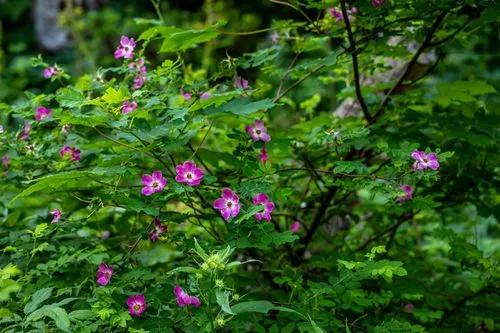Shepherdia argentea, commonly called silver buffaloberry, bull berry, or thorny buffaloberry, is a species of Shepherdia in the Russian olive family. It is native to central and western North America, from the Prairie Provinces of Canada (Alberta, Saskatchewan, Manitoba) southwards in the United States as far as Ventura County in California, as well as northern Arizona, and northwestern New Mexico.
Silver Buffaloberry Care
Shepherdia Argentea



Shepherdia argentea, commonly known as silver buffaloberry, is an upright, bushy, thorny-branched, thicket-forming, deciduous shrub of the Oleaster family. It is noted for its attractive silver-scaled leaves and branches plus its bright red (female plants only) fruit which matures in fall. It typically grows to 12’ tall and as wide, but will occasionally soar to an almost tree-like 18’ tall. Native range extends from central and Western Canada south to California, Arizona, Kansas, Michigan and New York. Main concentrations of this plant are in northern areas of the Great Plains from the Prairie Provinces of Canada (Alberta, Saskatchewan and Manitoba) south to Montana, North Dakota and South Dakota where it grows in a variety of habitats including both riparian areas (along edges of wet meadows, floodplains, streams, rivers, lakes and springs) and drier sites (woodlands, foothills, exposed slopes and prairies). In the far West, it is often found on dry, sandy, rocky or gravelly (often limestone) soils of plains and canyons. This plant was first collected for scientific examination by Meriwether Lewis in 1804 in the area where the Niobrara and Missouri Rivers meet in northeastern Nebraska. Silver-scaled stems are clad with opposite, elliptic, densely-pubescent, silvery-scaled leaves (to 2” long and 5/8” wide). Very tiny, tubular, apetalous, yellowish flowers, each with a 4-lobed calyx, bloom in spring (March) before the leaves emerge. Flowers on female plants, if pollinated, are followed by spherical, pea-sized, one-seeded, ovate, bright red fruits (each to 1/4” long) which appear singly or in clusters.
How to Care for the Plant

Popularity

18 people already have this plant 2 people have added this plant to their wishlists
Discover more plants with the list below
Popular articles






